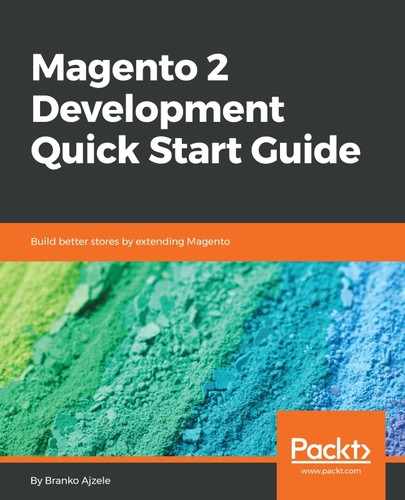Let's create the <MAGELICIOUS_DIR>/Core/Setup/UpgradeData.php file with the following content:
use MagentoFrameworkSetupModuleContextInterface;
use MagentoFrameworkSetupModuleDataSetupInterface;
class UpgradeData implements MagentoFrameworkSetupUpgradeDataInterface {
public function upgrade(ModuleDataSetupInterface $setup, ModuleContextInterface $context) {
$setup->startSetup();
if (version_compare($context->getVersion(), '2.0.2') < 0) {
$this->upgradeToVersionTwoZeroTwo($setup);
}
$setup->endSetup();
}
private function upgradeToVersionTwoZeroTwo(ModuleDataSetupInterface $setup) {
echo 'UpgradeData->upgradeToVersionTwoZeroTwo()' . PHP_EOL;
}
}
Let's go ahead and replace the echo line with something practical, like adding a new column to an existing table:
$salesSetup = $this->salesSetupFactory->create(['setup' => $setup]);
$salesSetup->addAttribute('order', 'merchant_note', [
'type' => MagentoFrameworkDBDdlTable::TYPE_TEXT,
'visible' => false,
'required' => false
]);
Here, we used the instance of MagentoSalesSetupSalesSetupFactory, injected through __construct. This further creates an instance of the MagentoSalesSetupSalesSetup class. We need this class in order to create sales EAV attributes. The order entity is somewhat of a strange mix; while it is registered as an EAV type of entity under the eav_entity_type table, it does not really use eav_attribute_* tables – it uses a single sales_order table to store its attributes. We could have easily used (Install|Upgrade)Schema scripts to simply add a new column via $setup->getConnection()->addColumn(). Once executed, this code adds the merchant_note column to the sales_order table. We will use this column later on, as we reach the Extending entities section.
